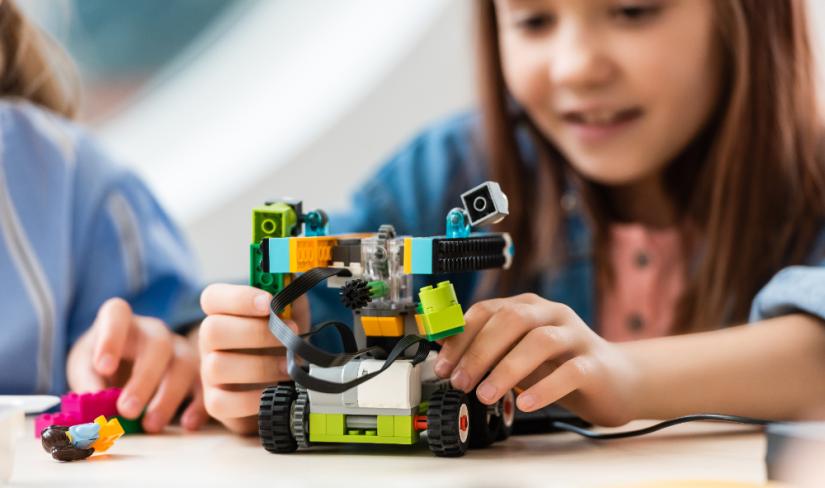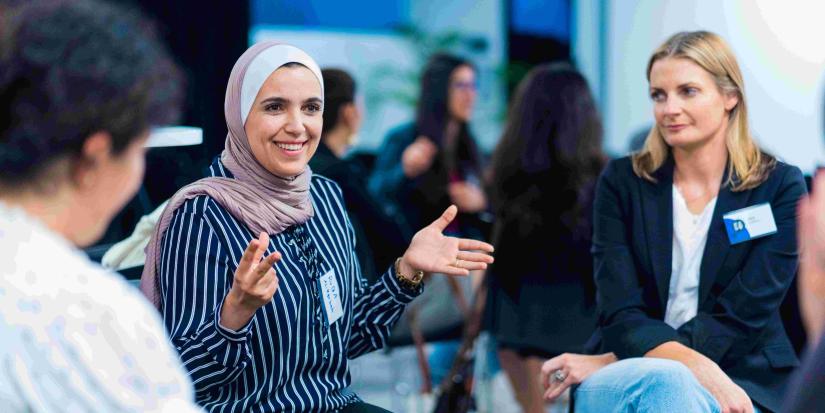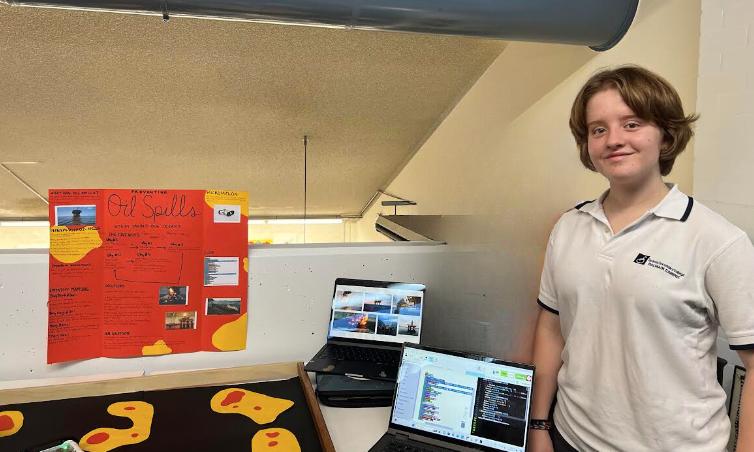UTS recognised for inspiring women in engineering and IT
UTS has earned two SAGE Cygnet Awards for initiatives that improve career pathways for women and girls in Engineering and IT.

Image: Adobe Stock
Like wonderous sea creatures, dedicated robots rove the ocean floor removing plastic and other rubbish. According to Maddie Blanch and Arielle Bor, both 14-year-old students at Sydney Secondary College Balmain Campus, this innovative idea could be a way to keep our oceans clean.
The girls were tasked with finding a solution to this real-world problem as part of the UTS Women in Engineering and IT (WiEIT) STEM x Outreach program – an initiative aimed at inspiring young women to consider a career in engineering and IT.
The program was recently honoured with a Cygnet Award from Science in Australia Gender Equity (SAGE). Part of the Athena Swan accreditation pathway, Cygnet Awards recognise successful initiatives aimed at reducing and eliminating barriers to gender equity.
It was one of two Cygnet Awards presented to the University of Technology Sydney (UTS). The second award was for UTS actions to support career progression for Higher Degree Research (HDR) women candidates in the Faculty of Engineering and IT.
Professor Andrew Parfitt, UTS Vice-Chancellor and President, says UTS is delighted to receive two Cygnet Awards, which demonstrate the university’s long-term commitment to improving gender equity in STEMM.
"Our outreach programs are increasing interest among girls and young women and providing them with confidence to pursue careers in STEMM. Through greater support for women completing higher research degrees, we can empower them to reach their full potential."

Ruba Al-zqebah and Dee Carvill from the Women in STEM Research Mentoring Program (WiSR). Photo: Ansh Bose
Dr Janin Bredehoeft, SAGE CEO, echoes the Vice-Chancellor’s sentiments.
“These two Awards recognise UTS’s impressive efforts to improve the career pipeline for women and girls to work in engineering and IT. Whether it’s at school or even as an early career researcher, there should be fewer gendered hurdles to progress, and UTS has been working to dismantle them. My congratulations go to everyone involved in this important work,” says Janin.
Our outreach programs are increasing interest among girls and young women and providing them with confidence to pursue careers in STEMM. Through greater support for women completing higher research degrees, we can empower them to reach their full potential.
Professor Andrew Parfitt, UTS Vice-Chancellor and President
According to the Australian Government’s ‘STEM Equity Monitor’ girls only make up a quarter of enrolments in year 12 information technology, physics and engineering classes. When it comes to higher education, women make up around 37% of enrolments in university STEM courses.
Stereotypes, bias, a lack of role models and understanding of STEM career options, disengagement from STEM education, and family and cultural expectations, have all been identified as key barriers to participation for girls in primary and secondary education in these areas.
The WiEIT STEM x Outreach program currently runs in 30–35 schools across NSW and is financially supported by Cognizant Australia. It sets out to address all six barriers by providing meaningful experiences for girls, teachers and families to engage with engineering and IT.
The two key arms of the program – which has been running since 2019 – are STEM x Play, aimed at Year 5 and 6 students, and STEM x Impact, aimed at early high school students.
WEIT Program Outreach Coordinator Marco Angelini says girls and young women are often discouraged or steered away from pursuing a career in engineering or IT.
‘The best part of our project is that we’re able to engage with families, teachers, career professionals and whole school communities over time, which allows us to address culture change and the messages that are out there in a long-term way,’ says Marco.
For Arielle, the program wasn’t just beneficial for learning new skills, but also because it gave her access to new and exciting tools.
‘My favourite part of the program was learning how to use technologies that our school doesn’t have. We have had robots, drones, robotic arms and Arduinos that have been borrowed from UTS,’ says Arielle.
‘By the end of the program my team and I had a robot that could navigate a surface without bumping into anything by using ultrasonic sensors. In the context of the ocean, this means it could avoid bumping into coral and crown-of-thorns starfish while it tries to collect rubbish,’ she says.

Maddie Blanch, 14-year-old student at Sydney Secondary College Balmain Campus.
For Maddie, the program also helped her to learn about the design thinking process, including how to empathise and define the problem, ideate, prototype and test a solution, and to see how her work could positively impact society.
‘My favourite parts were learning to code the Micromelons and getting them to move around to do the things we wanted them to do. It allowed us to visualise how the technology could be helpful and practical in a real-world context,’ she says.
Both girls are currently taking STEM electives and are involved in the school’s Girls STEM Club.
